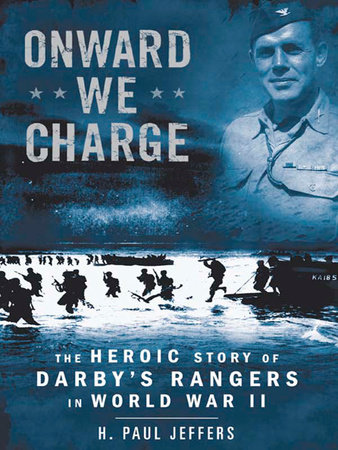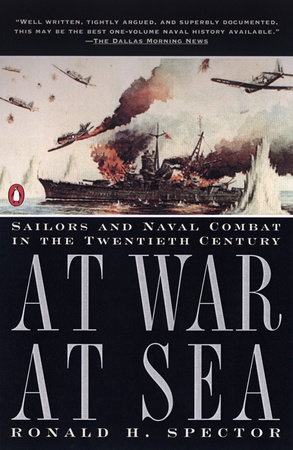Author Q&A
A Conversation with MICHAEL DOBBS
author of SABOTEURS: The Nazi Raid on America
Q: How did you discover this story and why did you decide to write a book about it?
A: I learned about the case of the Nazi saboteurs while I was researching a story at the
National Archives in early 1991 on another World War II subject. The notion of Nazi
saboteurs landing in America from U-boats immediately whetted my interest. An archivist gave me a tour of the "stacks"—where the records are physically stored—and I noticed dozens of boxes of FBI records labeled George John Dasch, the leader of the saboteurs. My decision to write a book about the saboteurs was based both on the intrinsic interest of the subject and the extraordinary detail of the archival records, many of them only recently released.
Q: How were you able to find so much information about the saboteurs’ training in
Germany?
A: Most of the information came from FBI records and the extensive interrogations of the saboteurs, all of whom ended up telling their story to the FBI. Dasch’s own statements to the FBI alone amount to nearly a thousand single-spaced typewritten pages. But I also followed in the footsteps of the saboteurs, visiting the farm outside the East German town of Brandenburg where they received training in handling explosives and secret communications. The
farmhouse has now become a hostel for guest laborers from a nearby steelmill, but the site
itself is little changed from 1942.
Q: What kind of sabotage were they instructed to carry out?
A: Their main target was the American aluminum industry, although transportation bottlenecks, such as bridges and railway lines, were also targeted. Hitler understood that Germany was likely to lose the war unless he could find a way of counteracting America’s vast military-
industrial potential. Aluminum was the basic material used to make airplanes: if he could slow America’s production of airplanes, he could prevent the U.S. Air Force from gaining control of the skies. The Luftwaffe chief, Hermann Goering, was a leading advocate of the sabotage plan.
Q: The portrait you paint of the Nazi saboteurs will surprise many people. Some of them seem comically incompetent.
A: The saboteurs were all German-Americans who had returned to Germany during the runup to World War II out of disillusionment with depression-era America and a desire to help the Fatherland. Many of them had been members of the German-American Bund, the U.S. equivalent of the Nazi party. The Nazis assumed that they would make good saboteurs because (a) they knew America well, and (b) they had demonstrated their devotion to the Nazi cause. Unfortunately for Hitler, several saboteurs saw the sabotage mission not as a chance to serve the Fatherland, but as an opportunity to return to America.
Q: How did they actually arrive on U.S. shores?
A: They arrived on two U-boats, one of which landed in Amagansett, Long Island, the other in Ponte Vedra, Florida. Their journey across the Atlantic was an adventure in itself: I have tried to give readers a sense of what it was like to live on board a German U-boat for several weeks, being tossed about on the ocean and hunted by allied warplanes. Remember this was June 1942—six months after Pearl Harbor—at a time when it was virtually impossible to travel
between Hitler’s Germany and FDR’s America.
Q: Nazis landing in the Hamptons? What happened when they got to shore?
A: The Hamptons were very different back then to what they have since become. Amagansett, in particular, was much wilder and less developed, even though it had been "discovered" by painters like Max Ernst. The saboteurs had orders to bury their explosives and other sabotage equipment in the sand, and return for it some weeks later. But things started going wrong
almost from the start when they ran into a Coast Guard patrol on Amagansett beach on a
fog-shrouded night.
Q: How were they eventually caught?
A: I don’t want to give away too much of the plot, but one of the saboteurs eventually gave
himself up to the FBI.
Q: So if he hadn’t turned himself in, would U.S. intelligence have ever found the saboteurs?
A: The FBI had launched a nationwide manhunt for the saboteurs when one of them showed up in Washington and asked to see J. Edgar Hoover. Up until that point, the FBI had been
pursuing false leads. It is difficult to know what would have happened if the sabotage mission had not been betrayed from within. Given better leadership, it is possible they might have
succeeded in blowing up some factories. There is a very fine line between success and failure in such operations—as we were reminded by the events of 9/11.
Q: How were the men dealt with? Did the man who turned them in get a pardon? Oddly, it’s hard not to feel just a bit sorry for them.
A: Six of the saboteurs were executed by electric chair. The remaining two were sentenced to long prison terms, but pardoned after the end of the war and sent back to Germany in 1948. As I researched and wrote the book, I felt varying degrees of pity for all of the saboteurs. In the end, they were very ordinary people, caught up in events over which they had little control. While I felt repugnance for their mission and their ideology, I could also feel empathy for them as human beings, particularly when I read the letters they wrote to their loved ones as they were waiting to be executed. I found these letters in the National Archives and quote from them extensively in the book.
Q: Were any legal precedents set regarding trying foreigners accused of sabotage?
A: They were tried by a secret military tribunal. To the dismay of the government, their army-appointed defense lawyer fought the case all the way to the Supreme Court. Known as Ex Parte Quirin, the Supreme Court ruling is the precedent used by the Bush administration for establishing military tribunals to try Al Qaeda members. (The case was named after Richard Quirin, one of the executed saboteurs.)
Q: What are the implications for how we try terrorists today?
A: The pendulum of legal opinion swings back and forth, depending on whether America is at war or at peace. The Supreme Court had issued a sweeping ruling after the Civil War in favor of habeas corpus, in Ex Parte Milligan, that barred the use of military tribunals when the civil courts were "open and functioning." That ruling was partially overturned by Quirin. After World War II, the pendulum swung back in favor of civil liberties, and many legal
experts argued that the saboteurs had gotten a raw deal. After 9/11, however, the Quirin
decision acquired new respectability.
Q: This book reads like a novel. Were you influenced by any crime/thriller writers?
A: I have used novelistic techniques to tell the story, including the development of characters, the frequent use of dialogue, and a constantly developing plot. The FBI and military tribunal records are a wonderful source of dialogue and physical descriptions of characters and places. I steeped myself in the atmosphere of World War II, reading novels about the cracking of the German Enigma code, as well as Das Boot by Lothar-Gunther Bucheim, which describes life on board a U-boat. But I was also influenced by non-fiction books, such as William Manchester’s Death of a President and Edmund Morris’s Theodore Rex. In their different ways, both of these writers excel at interweaving background into their narrative through the accumulation of sharply observed detail. They have the novelist’s knack of keeping the plot constantly
moving forward, encouraging the reader to keep turning the pages. It is a technique I tried
to use in my 1994 book about the collapse of the Soviet empire, Down with Big Brother.




























